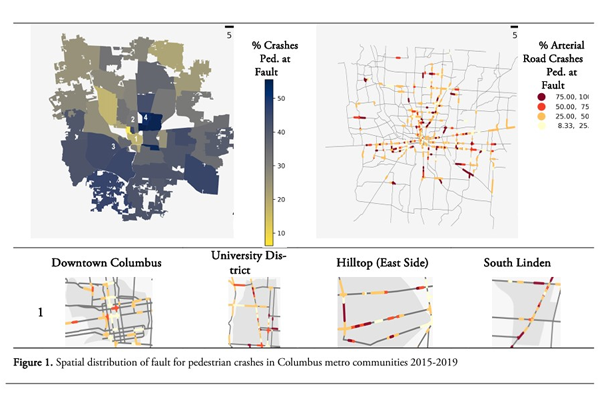Research: The built environment and the determination of fault in urban pedestrian crashes: Toward a systems-oriented crash investigation

In a paper published in the Journal of Transport and Land Use, former postdoctoral researcher at Ohio State, Jonathan Stiles, and CURA Director, Harvey Miller, identify factors that influence the determination of fault in urban pedestrian crashes in the United States.
Abstract
This study identifies built environmental factors that influence the determination of fault in urban pedestrian crashes in the United States, with implications for both safety and equity. Using data from Columbus, Ohio, we apply regression modeling, spatial analysis, and case studies, and find pedestrians are more likely to be found at fault on fast, high-volume arterial roads with bus stops. We also observe that better provision of crossings leads to more marked intersection crashes, which are less likely to be blamed on pedestrians. In addition, large differences in both the provision of crossings and fault exist between neighborhoods. We interpret findings through the lenses of the systems-oriented safety approaches Safe Systems and Vision Zero. The conclusion argues that the designation of individual responsibility for crashes preempts collective responsibility, preventing wider adoption of design interventions as well as systemic changes to the processes that determine the built environment of US roadways.
Authors: Stiles, J., & Miller, H. (2024). The built environment and the determination of fault in urban pedestrian crashes: Toward a systems-oriented crash investigation. Journal of Transport and Land Use, 17(1), 97–113. https://doi.org/10.5198/jtlu.2024.2335
Read the full article below!
